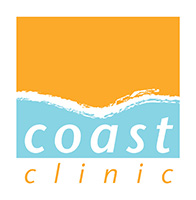It really is so important to focus on how much salt you’re taking in daily and to find healthy salt alternatives. Too much salt in the body means that your body must increase its fluid content and thus blood pressure is forced to rise leading to hypertension (high blood pressure) as well as other problems such as, including kidney and gall bladder stones, arthritis, gout and even cellulite.
However, we do need salt as much as we need water. Every cell structure in our bodies is controlled by salt (and water) and both are vital for the entry and exit of nutrients from the cells. Our nervous system responses could not happen without salt and it’s also necessary for supporting the function of the adrenal glands, responsible for producing vital hormones.
But in the western world, salt is now added to nearly every food we consume including salad dressings, cheese, fizzy drinks, tins of food and junk food, even your breakfast cereal.
Healthy Salt alternatives
Awareness is key though and there are many alternatives to enhancing flavor and taste in cooking that are healthier, smarter options. Why not give these healthy salt alternatives a try:
Himalayan Pink Salt – You may have already come across this as we carry it at the clinic – Himalayan Pink salt is a delightful pale pink colour and perhaps the purest salt available; it’s hand-mined from very old pollution-free marine deposits. It contains an array of minerals and trace elements that confer many health benefits such as promoting good digestion and balancing blood sugar. It also helps to balance the pH levels in our bodies and keep us more alkalised (the optimal state for our bodies to be in, rather than too acidic which can cause issues in the body).
Pick yours up when you’re next in for treatment.
Tamari – Tamari is naturally fermented (good for our digestion) and a gluten-free version of soy sauce with a mellow, malty flavour. It’s a delicious addition to stir-fries; you can also add a splash to sunflower/pumpkin seeds to make a delicious snack. You can also whisk it into salad dressings with apple cider vinegar and lemon juice.
Lemons – Sometimes a squeeze of fresh lemon is all your food needs to get that tartness to a dish. It’s a great alkaliser for the body and may be a useful salt substitute to try.
Hatch Miso – Miso is a traditional Japanese staple food and seasoning. Hatcho is a very intense Japanese miso and is dark in colour. As a fermented food it is very beneficial for the bacteria in our stomachs. You can add it to salad dressings as well as any Asian dishes or add a spoonful into soups/stews for a really rich taste.
Umeboshi Puree – Umeboshi is a cheek-sucking tart puree made from pickled plums. It’s really delicious added to dressings, or with fish and any hot dish. Again, it packs a distinct flavoursome punch. It stimulates digestion and help with the elimination of toxins.
Dill – Fresh dill adds pep to salad dressings and fish dishes; delicate and wispy with a fern-like appearance, it has a sweet taste. It has anti-bacterial properties similar to Garlic.
Cayenne – Cayenne comes from the Capsicum family (which includes peppers) and has been used in traditional Chinese and Ayurvedic medicines to help treat circulatory problems and increase appetite. Capsaicin is being studied as an effective treatment for sensory nerve fibre disorders, including pain associated with arthritis, psoriasis, and diabetic neuropathy.It adds zest and spice to most dishes.
Other herbs and spices – Quite often, the addition of fresh herbs can transform a dish and negate the need for added salt. Try basil, cumin, garlic, oregano, rosemary and thyme.
Ultimately, making home-made food is the only way to really control how much salt you are taking in, so if it is not home-made, be aware, check the label and then make your decision. And remember, as with everything, moderation is key.
Article by Daniela Barbaglia – Dip NT mBANT – Nutritional Therapist
If you’re interested in a Nutritional consultation, please contact me so we can have an initial informal chat.
References
It’s Time to End the War on Salt, Scientific American, July 8, 2011: Melinda Wenner Moyer.
The Long Term Effects of Advice to Cut Down on Salt in Food on Deaths, Cardiovascular Disease, and Blood Pressure in Adults, Cochrane Summaries, January 21, 2009: L. Hooper, et al.
Paleolithic Nutrition – A Consideration of Its Nature and Current Implications, New England Journal of Medicine, January 31, 1985: 312; 283-289, S. Boyd Eaton, M.D. and Melvin Konner, Ph.D.
The Encyclopedia of Healing Foods, Michael Murray, N.D. & Joseph Pizzorno, N.D. with Lara Pizzorno, M.A., L.M.T.
Article by Daniela Barbaglia – Dip NT mBANT – Nutritional Therapist
If you’re interested in a Nutritional consultation, please contact me so we can have an initial informal chat.

